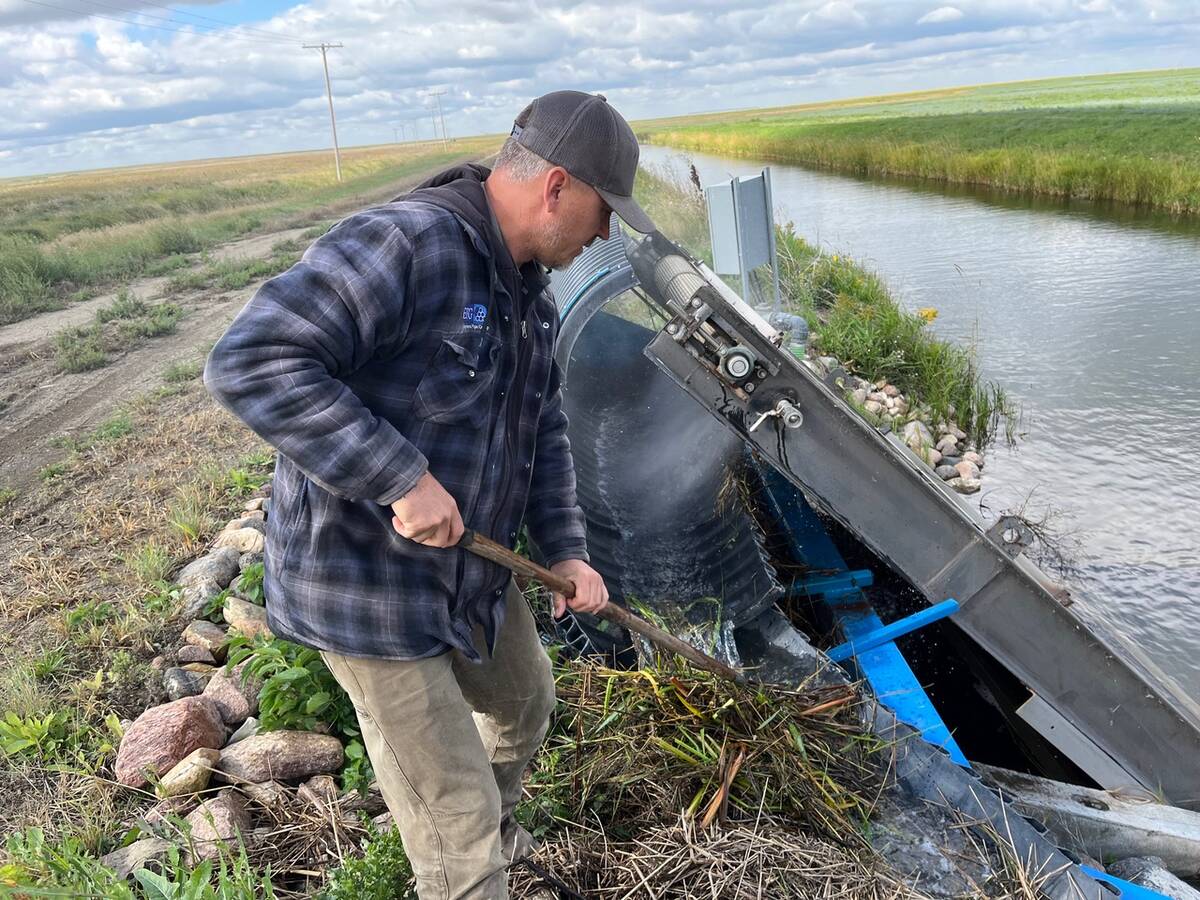Fuel price increases of nearly 50 percent in one year have encouraged farmers to cut those costs.
With technology advances, farm diesel engines are now close to 20 percent more fuel efficient than they were in 1990.
To take advantage of those gains, producers must make sure their tractors get as much power onto the ground as possible.
Right sizing
Farmers tend to buy tractors slightly larger than necessary to accommodate ever-larger implements and to ensure they are big enough for any task they might encounter.
Read Also

Saskatchewan farmer uses tile drainage to manage water
The integration of both irrigation and tile drainage results in higher yields, water efficiency, improved soils and less nutrient runoff, says one producer.
Experts say producers should instead size the tractor to do the work it does on an average day.
The reasoning is that it is better to have the tractor operate most of its time at its peak efficiency and tax it more heavily for short periods of extreme loading.
Gear-up, throttle-back
When performing operations that require a fraction of the tractor’s power, the gear-up and throttle-back technique is most efficient, as confirmed by the University of Nebraska Tractor Test Laboratory. This applies to loads that are 70 percent or less of the tractor’s rated optimum load, according to information from Alberta Agriculture’s Agricultural Technology Centre in Lethbridge.
In most cases, selecting a gear higher than normal and reducing engine speed by 20 to 30 percent will yield an equal ground speed and improve fuel efficiency.
It must be remembered, though, that lower engine speeds will often result in lower power take-off speeds and slower hydraulic reactions and flows.
The key is to avoid overloading the engine often signalled by excessive black smoke emissions.
To check the engine for overloading, work the tractor for a short time at the desired speed and throttle setting. Then, rapidly open the throttle. If the engine readily picks up speed, it is not overloaded. If it does not respond quickly, shift down a gear or increase the engine speed.
Right fuel and burn
Summer fuel contains more energy than winter blends and as a result is more efficient.
Ensure that injectors, pumps and air filters are well serviced.
Right rubber
In dry conditions, old tires are more efficient than new because their shorter, stiffer lugs don’t waste energy bending under load.
In wet conditions such as this year, longer lugs are more efficient because they reduce slip by squeezing out more mud.
Accurate tire inflation improves efficiency by transmitting the most power to the ground with the least damage to the drive train or soil surface.
Reed Turner of Alberta Agriculture’s Ag Tech Centre said choosing fewer and larger tires generally creates the most effective traction and most efficient fuel consumption.
Radial tires further enhance traction in field operations, Turner said, provided they are correctly inflated.
Right weight
Proper ballast optimizes traction from properly inflated tires without carrying more weight than necessary.
Like sizing the tractor for the load, ballasting for the average job improves fuel efficiency and reduces strain and wear on equipment. Ballast for the average rather than worst-case scenario.
Farmers should ballast for an average speed of the most common task and expect extra slippage during unusually high loading periods.
Slippage is ideally in the eight to 12 percent range for optimum fuel use.
Reduce use
Turner said producers shouldn’t let tractors idle only to keep air conditioning on in the summer or the engine warm in winter.
“Open the windows and shut it down. Plug it in in the winter.”
Turner said any technique that doesn’t cause producers to start a tractor makes them more energy efficient.
















